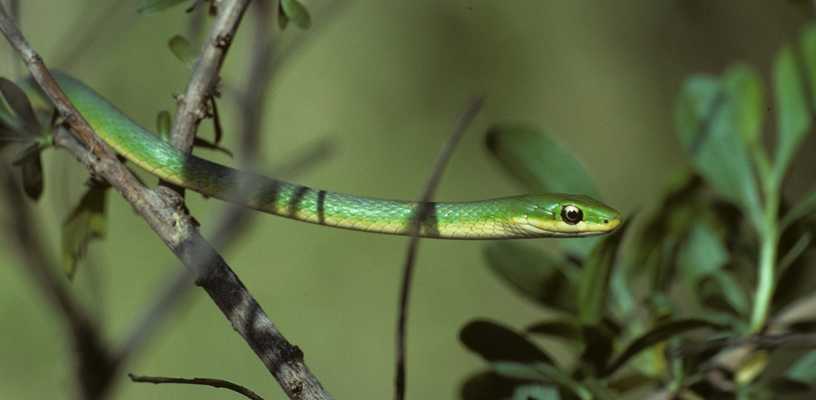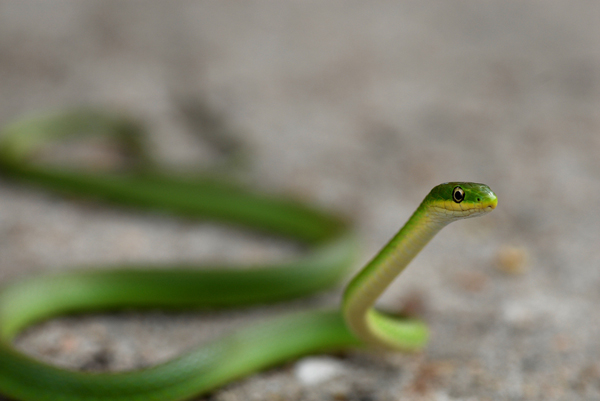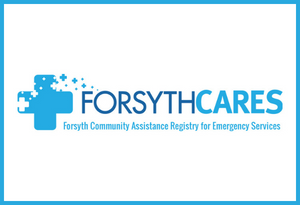
- By Phyllis B. Smith
- Posted Friday, June 28, 2019
Going Green? Let this slender beauty provide enhanced pest control.
If you guessed green snake you’re right, or more specifically, the rough green snake, (Opheodrys aestivus) a close relative to the smooth green snake which ranges farther north. The “roughness” of this snake comes from a raised line running the length of each scale, a characteristic known as “keeled”.
They are found throughout most of North Carolina, but are seldom seen due to their protective coloration among their preferred habitat of dense vegetation. They consume small prey such as insects, insect larvae, spiders, snails, and slugs, providing an efficient form of biological pest control. If threatened, they may open their mouth wide, but this nonvenomous snake seldom bites.
Rotting logs provide a suitable place to lay their eggs, a good reason to preserve such ecosystem components within forests and woodlots. Consider yourself lucky to catch a glimpse of this lime-green beauty, and even luckier if one shows up in your home garden to assist with pest control.
For further details on all North Carolina snakes visit the Amphibians and Reptiles of North Carolina website, http://herpsofnc.org/, maintained by the Davidson College Herpetology Lab and click on any “Snakes” thumbnail.
N.C. State University Extension offers the publication Reptiles and Amphibians in Your Backyard, https://content.ces.ncsu.edu/reptiles-and-amphibians-in-your-backyard. Download here, or drop by the Forsyth County Center of N.C. Cooperative Extension at 1450 Fairchild Road in Winston-Salem to pick up a free copy.
Sources:
Dorcas, D. (2005). A Guide to Snakes of North Carolina. Davidson College Herpetology Lab, Davidson, N.C.
Martof, B., Palmer, W., Bailey, J. and Harrison, J. Amphibians and Reptiles of the Carolinas and Virginia. The University of North Carolina Press, Chapel Hill, N.C.











